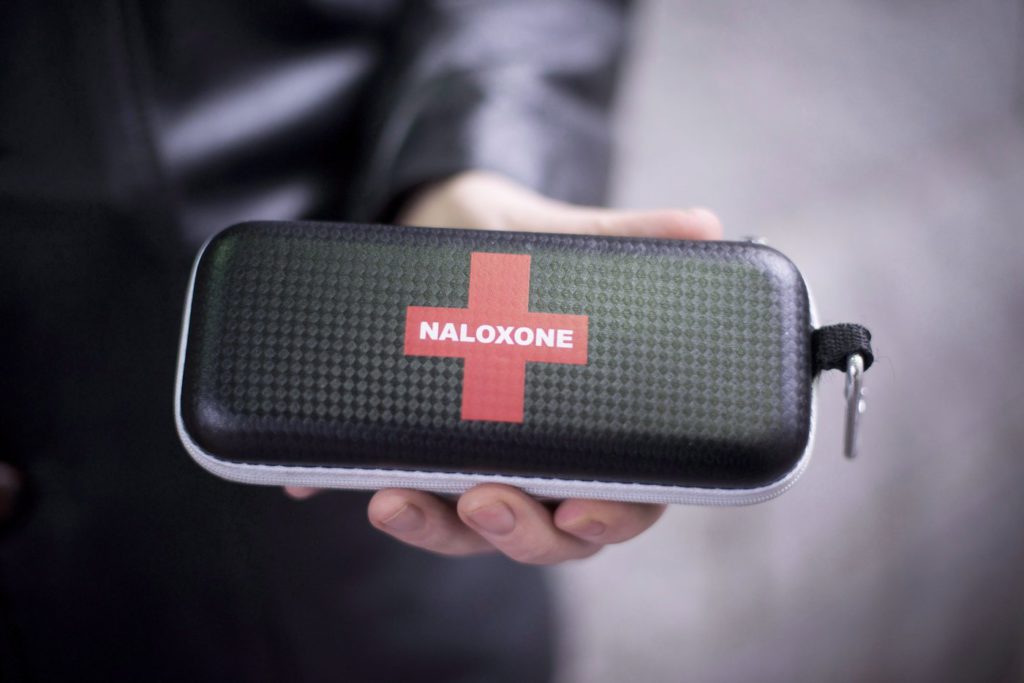
British Columbia Emergency Health Services has released grim statistics on the toxic drug crisis ahead of the seventh anniversary of the province declaring a public health emergency.
B.C. set records in March for the most overdose calls in one day, the highest 30-day average of overdose calls and the most consecutive days where paramedics attended 100 or more poisonings.
The province is also on pace to set a new record for poisoning calls in a year and match its annual record for the most naloxone doses administered to reverse the effects of opioids.
B.C. was the first jurisdiction in Canada to declare a public health emergency over increasing overdoses on April 14, 2016. Overdose deaths had reached 474 in 2015, a 30 per cent increase from the year before, and the government said more people were dying every month.
Last year, the toxic drug supply claimed nearly 2,300 lives in B.C.
Leslie McBain, one of the founding members of the advocacy group Moms Stop the Harm, said the number of illicit drug poisoning calls are devastating, but not surprising.
The drug supply has been getting more toxic and there’s not enough testing available for people who use drugs to know what they are consuming, she said.
“It’s a crapshoot because there are new things (in the drugs) and in different strengths, there’s no consistency around the drugs, and there’s still, obviously, people who need these drugs. It’s the perfect storm.”
The data shows B.C. recorded an average of 119.9 overdoses a day in March. The previous 30-day high was 116.2 recorded from July to August 2021.
From March 15 to April 2, Emergency Health Services was notified of 100 or more poisonings on each of those 19 days. The previous record for consecutive days was 15, set in August 2021.
On March 22, 2023, paramedics responded to a total of 205 poisoning calls in B.C., a new provincial daily record exceeding the previous mark of 203 on Jan. 19, 2022.
McBain, whose 25-year-old son Jordan died in 2014 of a pharmaceutical drug overdose, remembers feeling optimistic when B.C. declared the emergency, believing it would start the momentum needed for change.
“I would have never predicted, I could have never predicted, that it would just get worse and worse and worse,” she said.
The public face of the emergency in the early years was medical health officer Dr. Perry Kendall.
Now retired, Kendall told The Canadian Press that had those in power realized how toxic the supply of drugs would become, they may have worked sooner to increase access to a safe supply.
“What I think was needed at the time, had we but known — and it’s still very contentious — is the whole issue of increasing safe supply and actually getting enough good medications in stock for people who are actually trying to get into treatment,” he said.
Kendall said declaring an emergency was meant to increase public awareness and require data around overdoses and deaths to be released more quickly.
A working group was pulled together to organize the emergency response.
“We introduced overdose prevention sites, the minister ordered the regional health authorities to open up overdose prevention sites where the need was, the coroner was able to give us information on a rapid basis … we got a significant budget to add to the response,” he said.
Kendall said it appeared at first that their efforts were having some impact. Deaths levelled out at the 1,500 range in 2017 and 2018 before dropping below 1,000 in 2019.
“And then COVID struck,” he said.
“People just didn’t have access to supervised consumption sites, to overdose prevention sites, that they needed, and the numbers rebounded in 2020, in 2021 and 2022.”
Kendall is an advocate for both national decriminalization of drugs and a Canada-wide safe supply program.
“Prohibition and criminalization and stigma have not made life better for many people. They have not stopped people using drugs, they’ve just made the drugs a whole lot more dangerous,” he said.
“And so, the experiment with decriminalization is one factor that might help to reduce stigma and ameliorate the problem, but it’s not enough.”
He said there’s an “ethical duty” to make drugs safer with a regulated supply that adults can access so that they know what they’re consuming.
“I think until we can either come up with a mechanism of changing people’s characters on a huge scale so they’re not interested in using mind-altering substances — and I obviously don’t think we’re going to be able to do that — or else we create a regulated supply that is safer,” he said.
Seven years later, McBain said she sees signs of improvements in B.C. for policies to help drug users but that it’s not moving nearly fast enough.
The need for safe supply is still front of mind, the same way it was in 2016, she said.
McBain noted that several people die every day in the province and when you multiply that number by another one, two or three years, until there is a safe supply, thousands more will by killed by toxic drugs.
“So, you know, we need to treat this like the emergency that it is, that was declared those seven years ago, and it doesn’t seem like it’s being treated as an emergency.”
This report by The Canadian Press was first published April 13, 2023.


 Ashley Joannou, The Canadian Press
Ashley Joannou, The Canadian Press

